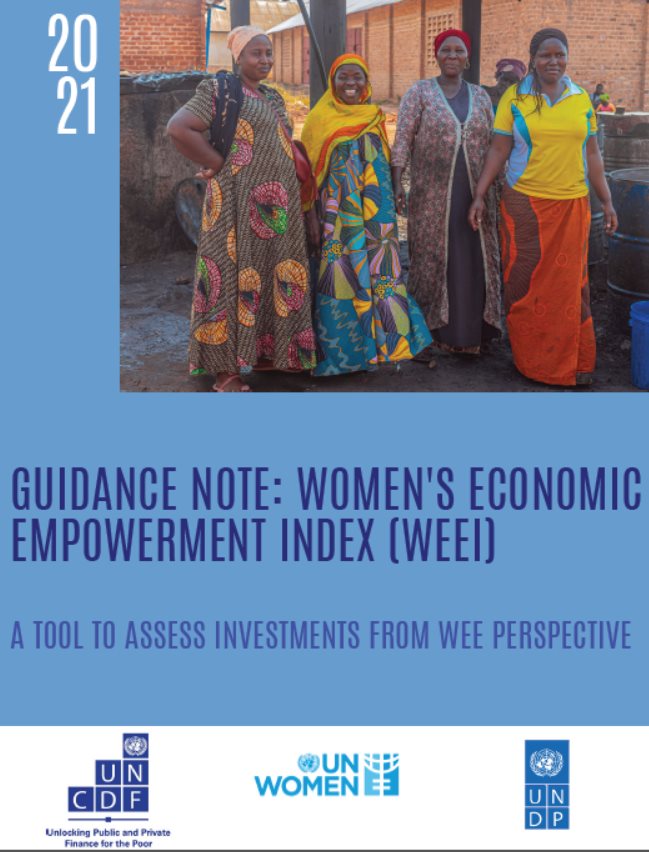Background and Purpose
UN agencies and other stakeholders seeking to promote women’s economic empowerment require tools to assess projects and businesses for investment and fund. Women’s economic empowerment investment aims to promote sustainable entrepreneurship principles that focus on both social outcomes as well as business profits, hence recognizing the need to expand the scope of project evaluation to broader measures of women's well-being. Impediments to WEE can be overcome through gender-enabling policies at the firm level and via public investment projects that reduce women’s unpaid care burden and improve women’s access to income-generating activities on an equitable basis with men.
The Women's Economic Empowerment Index (WEEI) is a standard developed by UNCDF in collaboration with UN Women and UNDP and it assesses the viability of an investment from a women's economic empowerment perspective. WEEI Indicators are used to evaluate the extent to which businesses and public investment projects contribute to gender equality and women’s empowerment. WEEI is part of the dual key due diligence system adopted by UNCDF to analyze investments using a thematic key such as WEE, climate adaptation, food security and a financial key that assess the financial viability of the project.
The WEEI tool allows users to rank and prioritize gender-responsive investment projects. WEE criteria and indicators are, therefore, beneficial to governments and businesses seeking to measure, track, and assign a value to the impact of their sustainability activities on key investment and financial metrics.
The WEEI comes in two versions—one adapted to assessing companies in the formal and informal sector at any stage of growth and one adapted to assessing public investment projects.
The Business WEEI
The business WEEI tool includes four sets of indicators:
A. Section 1: Organizational Structure and Workforce
B. Section 2: Institutional Policies that are Gender-Equalizing
C. Section 3: Business Products and Their Effects on Gender Equality
D. Section 4: Supply Chain/Procurement Policies that Seek to Include Women
The Public Investment WEEI
The public investment WEEI tool has just two sets of indicators:
A. Section 1: Environmental and Social Safeguards
B. Section 2: Gender-Equalizing Conditions
Implementation Method
Each section has a number of core indicators, and some sections have bonus questions. The tool and accompanying guidance note provide definitions, data sources, and thresholds to qualify for scoring points. Once points are tallied for each section and divided by the number of indicators, the totals for each section are weighted to arrive at a final score. Scores above 0.50 are considered gender-responsive investments that contribute to women’s economic empowerment. This process gives users a clear and practical way of qualifying opportunities as gender-responsive and can also identify areas for improvement.
WEEI guidance note provides details on Index indicators and the methodology for calculating the index. Details on each indicator includes a definition, rationale, concept, methodology and data source.
